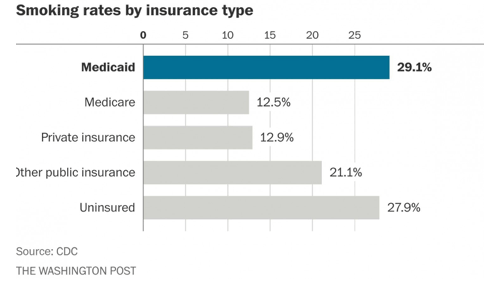The Obama administration took steps this week to eliminate cigarette smoking in the nation’s more than 3,100 public housing projects and agencies throughout the country.
With all the effort over the years to restrict or eradicate one of the worst sources of respiratory disease from public buildings, restaurants and bars, it seems odd that it has taken until now for the government to crack down on smoking in and around public housing facilities teeming with thousands of families and the elderly who are highly vulnerable to passive smoking.
Related: California Senate votes to raise smoking age to 21 from 18
To its credit, HUD began encouraging public housing agencies to adopt smoke-free policies in their residential buildings and common areas in 2008 and received a positive response that resulted in the conversion of more than 228,000 public housing units to “smoke-free zones.” But that still left more than 940,000 units where smoking is allowed.
"We have a responsibility to protect public housing residents from the harmful effects of secondhand smoke, especially the elderly and children who suffer from asthma and other respiratory diseases," HUD Secretary Julian Castro said in a statement. The housing secretary said that the ban would guard the health of more than 760,000 children and save about $153 million a year in health care costs, repairs and preventable fires.
The good news nationwide is that cigarette smoking has declined to its lowest rate in decades, according to new data released this week by the Centers for Disease Control and Prevention. While anti-smoking campaigns have made great strides since the surgeon general linked smoking to cancer 50 years ago, it still poses a serious health risk.
More than 20 million Americans have died because of smoking since the first warnings were issued. And if current rates continue, 5.6 million Americans younger than 18 who are alive today are projected to die prematurely from smoking-related disease, according to the surgeon general’s office.
Related: The Surprising Reason Americans Are Buying More Cigarettes
According to the CDC, smoking still is responsible for about 480,000 deaths a year in the U.S., along with $300 billion of health costs and lost productivity.
As Brady Dennis of The Washington Post notes, the CDC numbers offer intriguing insights into the 17 percent of American adults who continue to smoke:
- Between 2005 and 2014, the adult smoking rate declined from 20.9 percent to 16.8 percent.
- Adults living in the Midwest are the biggest smokers of all (20.7 percent) while those in the West smoke the least (13.1 percent)
- The percentage of smokers who smoke 30 or more cigarettes a day declined from 12.7 percent in 2005 to 6.9 percent in 2014.
- By age groups, those 25 to 44 years of age smoke the most (20 percent) while those 65 and older smoke the least (8.5 percent)
- People with little education smoke the most (43 percent) while higher educated people smoke the least (5.4 percent).
- Multi-racial and white adults are among the biggest smokers, while Asian-Americans smoke the least.
- Adults who are uninsured or receive Medicaid smoke at rates double those of people who are on Medicare or private insurance.






